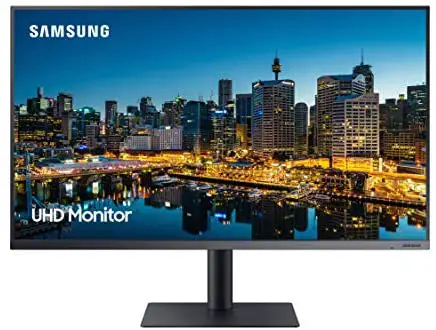The article was first published on Global Corporate Venturing.
Politicians in the White House and Europe want to bring tech manufacturing back to its home turf. But while tech companies like Apple are slowly moving manufacturing operations away from China, they’re shifting them over to India, Vietnam, and Mexico – not the US.
The reality is that bringing manufacturing back to the US or Europe is more complex than it seems because of the deeply embedded chains built over decades of East-West collaboration.
We believe that Western re-shoring will be a long struggle and that Chinese hardware businesses will continue to make excellent investment targets in the meantime.
Rebuilding industrial value chains will take time
The US offshored a significant amount of production, such as electronics, in the 70s, which extended into IT and communications in the 90s. Restoring these abilities requires significant time, investment, and effort. Even the most basic of necessities – the humble N95 face mask – required navigating a complex maze of obstacles to have it manufactured back in the US. The irony was US companies had to import materials and production equipment from China to make it possible to manufacture the masks locally. Building a resilient supply chain is expensive as well, just to ensure there are alternative sources and resources. And knowing the bureaucracies of US politics, there’s the challenge of getting all regulatory agencies to work together.
Capital markets aren’t supporting manufacturing
Known as the smile curve and the ‘Manufacturing Gap,’ where the return on capital is too low for capital markets to invest in, the smile curve hypothesis shows that the manufacturing stage is the least valuable in the entire industrial value chain.
This is very much true: chip designers enjoy gross margins as high as 60%, while companies that produce and assemble the chips average just 17%, according to Bloomberg Intelligence. Currently, chip design is dominated by the US market at 68% of the market share. But the US possesses just 3% of the outsourced semiconductor assembly and testing market.
In the West, labor is expensive, energy is costly, and companies struggle to find banks to finance their new factories, especially if it takes up to two decades to pay off.
If we look at NASDAQ to see where capital flows, less than a quarter goes to hard tech. Assuming most of it is R&D, design, and marketing, we can expect even less going into the actual manufacturing of the product. However, more than half of all the market capital is invested in software, and the rest is laid across a broad variety of services and fundamentals.
The Chips Act and the Inflation Reduction Act will not benefit smaller startups
The Chips Act and the Inflation Reduction Act were passed to encourage bringing manufacturing back to the US, creating more jobs, and protecting intellectual property. Subsidies and tax cuts are in place, but we see these mostly benefiting the large conglomerates such as Intel or Texas Instruments. From a WACC (weighted average cost of capital) standpoint, expected returns range from 10% to 15%. For smaller startups backed by venture capital funds, that only makes sense at a 30% internal rate of return. Yet small companies make up the bulk of the market.
And as S&P Global Market Intelligence reports, “there are also plenty of challenges that the Chips Act can’t directly address — a complex brew of economic factors, logistical bottlenecks and disruptions, trade wars, shifting geopolitics and (not least) technical barriers — that could mitigate any positive impacts attributable to the Act.”
Learnings from the clean tech bust a decade ago
The 2011 Solyndra bankruptcy was a valuable lesson for many tech investors, a spectacular failure in the clean tech bust at the beginning of the 2010s. In total, government grants worth $1 billion went up in smoke — it was quite exceptional that a single clean tech company could receive so much in grants. The concept of solar energy drawn from a revolving tube of alternative solar-sensitive materials was interesting, but the delivery and execution left much to be desired. This can be attributed to 3 primary reasons:
(a) Extremely high cost
From R&D to manufacturing to distribution, several teething issues weren’t resolved. Solyndra invested in a costly custom machine that couldn’t reach its expected output. In the end, a Solyndra module’s production cost 30% more than a traditional solar panel.
(b) Slow ramp-up
Poor timing. In 2008, polysilicon prices, a key element for solar panel production, was $300/kg. By the time the federal government approved Solyndra’s loan, the prices fell to $50/kg. Natural gas prices fell as well, contributing to lower energy prices. At the same time, a flood of Chinese-made solar panels became a much more viable option.
(c) Slow revenue
Private venture capital funds typically work on three to five-year horizons. Energy and environmental technology initial offerings on traditional exchanges take an average of 8.3 years.
As TechCrunch reports, “Solyndra had the innovations, but it didn’t get to the price point where it could compete, not only with other energy sources but even with the conventional solar panels it was trying to disrupt.”
The combination of factors – the 2008 financial crisis, cheaper natural gas, and China’s affordable quality solar panels – formed the perfect storm for Solyndra to fall.
We’re starting to see the same thing happening today. Remember Nikola, touted as the global leader in zero-emissions transportation, energy supply, and infrastructure solutions? The stock (NKLA) price is down 70% today. And chip plants aren’t cheap or easy. Building a chip plant in the US is several times what it costs in Taiwan and Asia. Just an entry-level plant in the US will cost $10 billion to $20 billion, and up to five years to build. Let’s not forget operational costs. A chip plant requires an average of 4.7 million gallons of water daily – unable to meet today’s ESG requirements. A semiconductor engineer’s salary in the US is $118,300 a year, while the same engineer in the Taiwan region is paid $32,500 a year. If we do the math, many of these costs will be passed on to our pockets: the consumers.
“One of the big reasons for this is that the cost of labor is lower, and it’s just far cheaper to produce at a very massive scale, integrated circuits and chips, in those parts of the world (Asia),” says Columbia Business School professor Dan Wang.
Morris Chang, the founder of TSMC, said that it costs 50% more to manufacture chips in the U.S. than in the Taiwan region.
Difficult to replicate Tesla’s success
Of course, many will cite Tesla as the most obvious, successful, hard tech company out of the US. It is worth noting that aside from the US, Tesla has built factories globally in markets where they are popular: Germany and China. Two crucial points stand behind its success:
(a) Tesla is a direct-to-consumer company. There are no middlemen costs in between. Even more so with their factories located in customer countries.
(b) The founder, wealthy from his sale of Paypal and eBay, assumed Tesla’s earliest startup risks heavily with his personal funds.
We can safely assume that most startups in materials or hard tech don’t have, or can, afford that model.
When bringing tech manufacturing back to shore is motivated by politics, it inevitably increases costs for everyone, due to the lack of consideration for economic fundamentals. Even with a substantial investment of capital and resources, a clear and present risk of failure remains. While there is a resurgence of hard-tech startups in the market, we prefer to remain cautious – as we, like all capital investors – must look at the hard economics first.
We believe in this because our investment philosophy centers around not just the science behind the tech, but also the macro and microeconomics behind it. It is one of the reasons our investments regularly deliver positive results.
In conclusion, we can expect this to be a long value chain struggle. While there are plans and steps in place to close that manufacturing gap in the West, it will be years, possibly decades, before that becomes a common reality. Until Western manufacturing costs fall to a level that can beat Chinese manufacturing outputs, the advantage of Chinese manufacturing cost, quality and experience remain our preferred reality for now.


